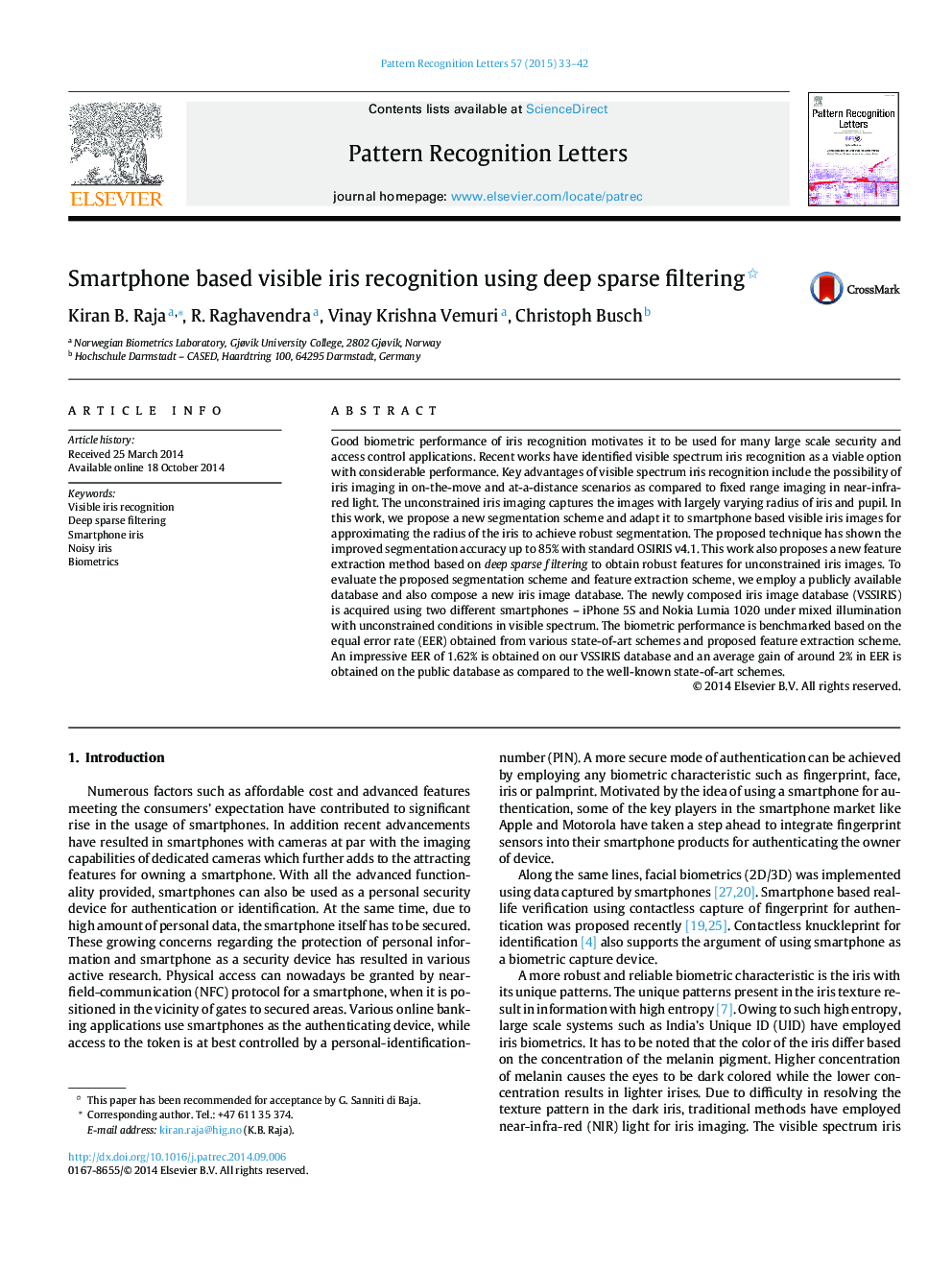| کد مقاله | کد نشریه | سال انتشار | مقاله انگلیسی | نسخه تمام متن |
|---|---|---|---|---|
| 535218 | 870331 | 2015 | 10 صفحه PDF | دانلود رایگان |
Good biometric performance of iris recognition motivates it to be used for many large scale security and access control applications. Recent works have identified visible spectrum iris recognition as a viable option with considerable performance. Key advantages of visible spectrum iris recognition include the possibility of iris imaging in on-the-move and at-a-distance scenarios as compared to fixed range imaging in near-infra-red light. The unconstrained iris imaging captures the images with largely varying radius of iris and pupil. In this work, we propose a new segmentation scheme and adapt it to smartphone based visible iris images for approximating the radius of the iris to achieve robust segmentation. The proposed technique has shown the improved segmentation accuracy up to 85% with standard OSIRIS v4.1. This work also proposes a new feature extraction method based on deep sparse filtering to obtain robust features for unconstrained iris images. To evaluate the proposed segmentation scheme and feature extraction scheme, we employ a publicly available database and also compose a new iris image database. The newly composed iris image database (VSSIRIS) is acquired using two different smartphones – iPhone 5S and Nokia Lumia 1020 under mixed illumination with unconstrained conditions in visible spectrum. The biometric performance is benchmarked based on the equal error rate (EER) obtained from various state-of-art schemes and proposed feature extraction scheme. An impressive EER of 1.62% is obtained on our VSSIRIS database and an average gain of around 2% in EER is obtained on the public database as compared to the well-known state-of-art schemes.
Journal: Pattern Recognition Letters - Volume 57, 1 May 2015, Pages 33–42
